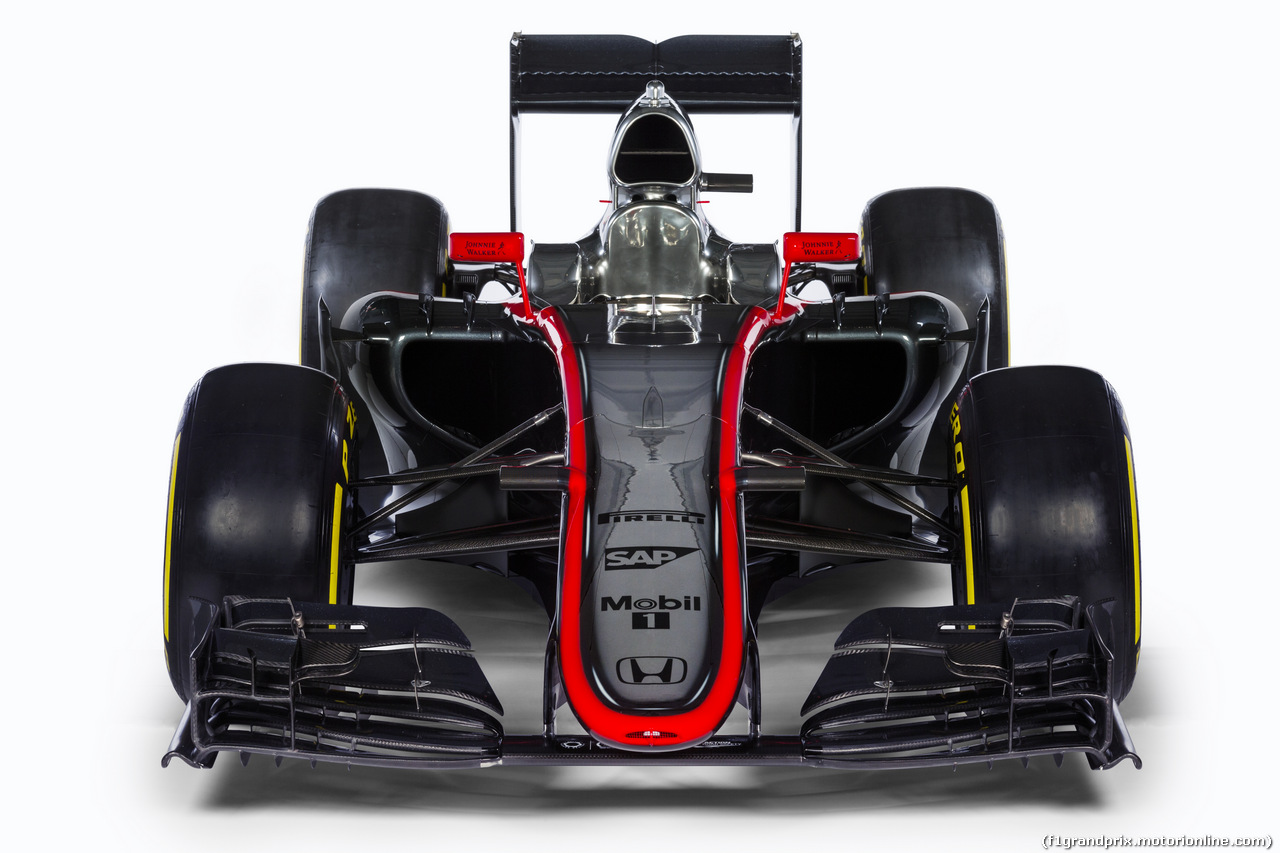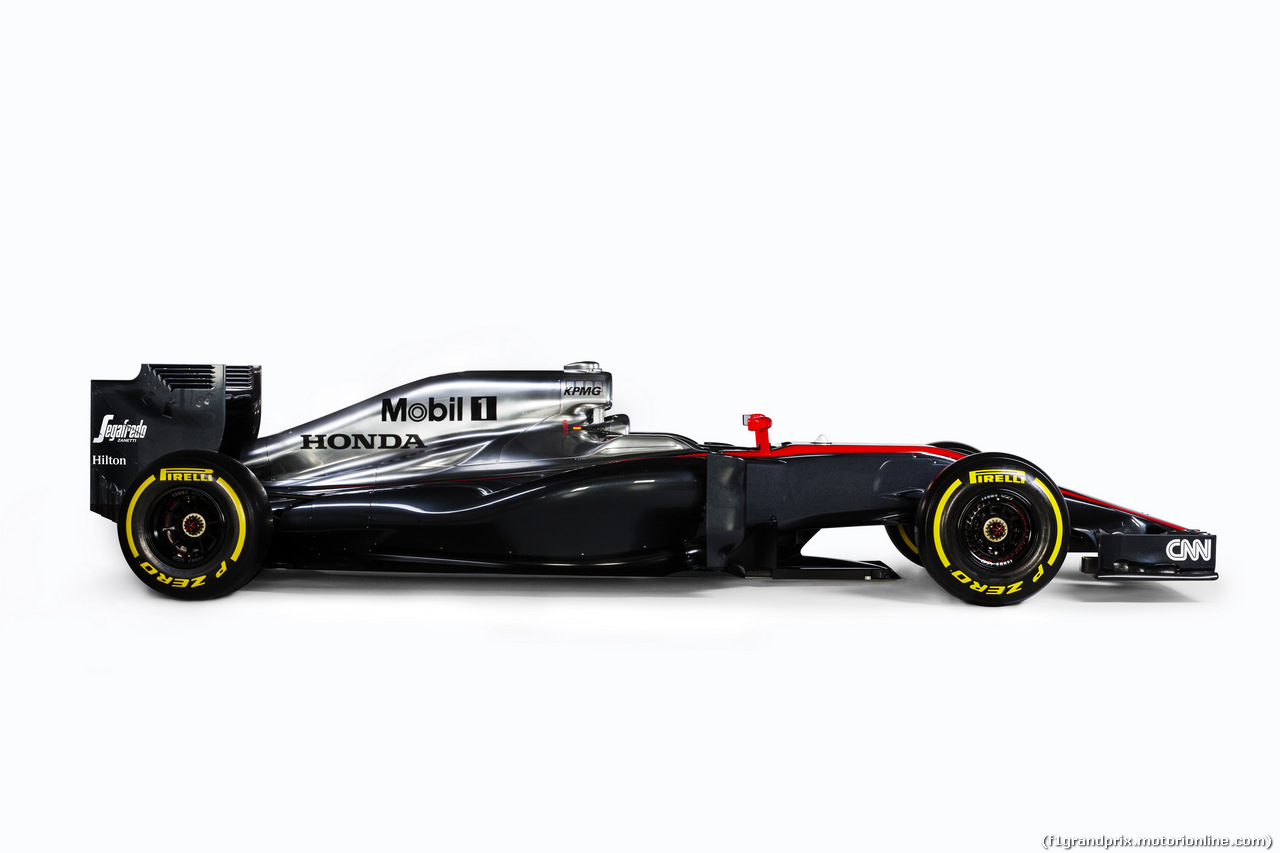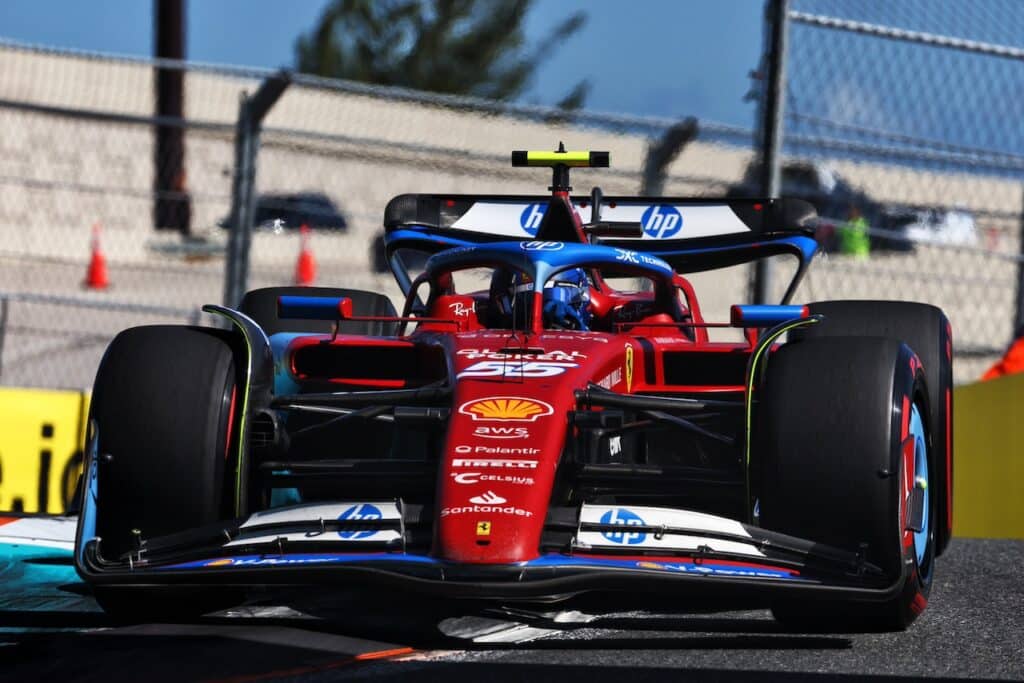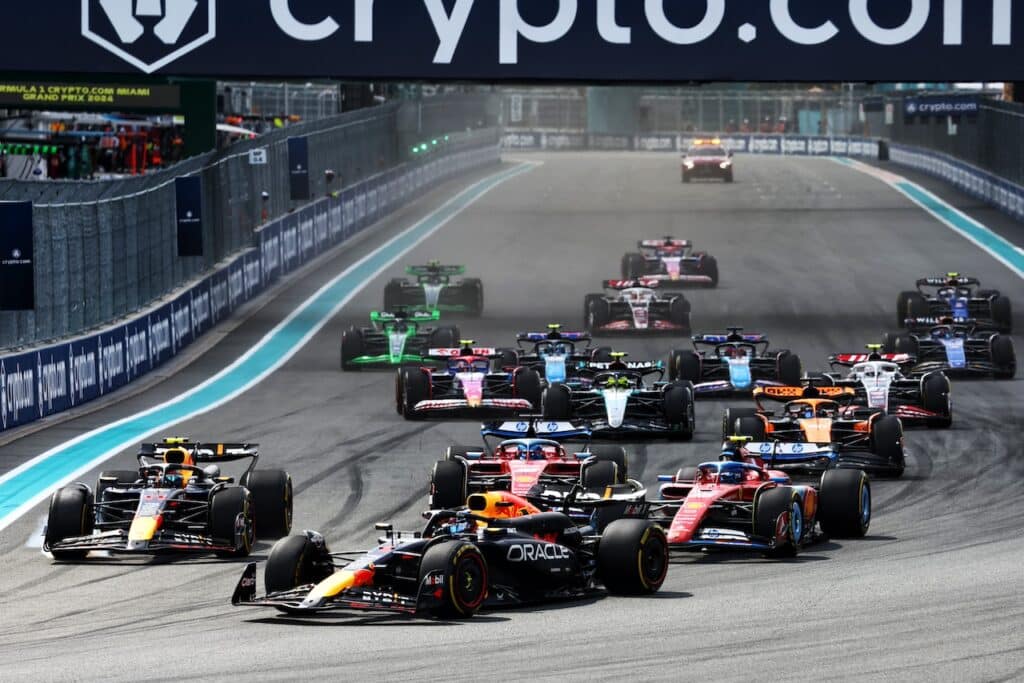McLaren Honda MP4-30: technical analysis
Let's discover the secrets of Woking's new car
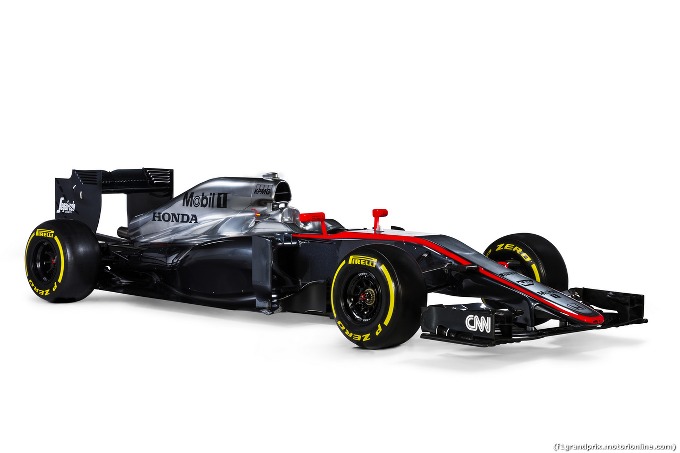
McLaren Honda MP4-30 – The new McLaren-Honda MP4-30 was revealed today at the McLaren Centre, which will be driven by Fernando Alonso and Jenson Button.
When designing the car, the Woking engineers started from a blank sheet of paper following a different design philosophy compared to previous seasons. Credit for this must be given to the new designer, Peter Prodromou, who took up residence in Woking during the summer of 2014.
The muzzle is very elegant; the McLaren engineers chose not to follow the lines followed by Williams and designed a very long nose with a small bulge in the lower part (a sort of "mini" pelican). It is not entirely excluded that from the tests the nose could change and move on to the "short" versions with small bulb and (perhaps) S-Duct.
The frame, on the MP4-30, has been raised compared to that of last year's MP4-29 even if the nose, in the area where the pedals are located, has a very hollowed out area that the MP4-29 did not have. The shape of the body remains higher than the 525 mm required by the regulation in the front part and therefore it must necessarily decline to size with a step that has been covered by a special Vanity Panel. This was done to facilitate a greater passage of air to be conveyed towards the rear diffuser. The front wing is the same one that was tested last season during free practice in Abu Dhabi.
The front suspension remained push rod even though it was completely redesigned following the lines dictated by last season's dominator: Mercedes W05. The excellent aerodynamic cleanliness that the English engineers and aerodynamicists have managed to achieve is very evident from the front image.
Rear suspension with pull rod layout with redesigned elements, always, to guarantee the best possible aerodynamic penetration.
The roller shutter solution has not been completely abandoned (the upper part is missing) and is present in its "evolution". As regards support for the rear wing, McLaren has followed the lines of Williams and Toro Rosso who, since last season, used the vertical fins of the wing as support.
The rear wing is an evolution of the 2014 version: the trailing edge of the main profile and the leading edge of the mobile flap have a serrated shape. Furthermore, the two slits on the endplates of the rear wing have been introduced to try to reduce aerodynamic resistance, limiting the extremity vortices.
The airscope and the bonnet have been completely re-designed and the dimensions appear larger than the solution used last season. By carefully observing the airbox you can notice that the latter is divided into two inlets: one powers the internal combustion engine while the other is intended for cooling the gearbox oil radiator. Furthermore, the flow diverters located in front of the sides have been changed and integrate with the new rear bodywork of the car.
The sides, in the initial part, are quite voluminous with the cooling vents of the radiators having a triangular shape. The sides, immediately after the radiators, narrow very decisively, in fact, the rear of the MP4-30 is very tapered. In this area of the single-seater, a philosophy clearly inspired by Red Bull was followed. Small vortex generators have been placed on the leading edge of the sides to improve the flow of air directed towards the rear of the car.
At first glance, this MP4-30 seems really interesting. Now it will be up to the track to demonstrate whether it will also be fast.
Eng. Cristiano Sponton
if you want to always be updated on our news
Follow us here

